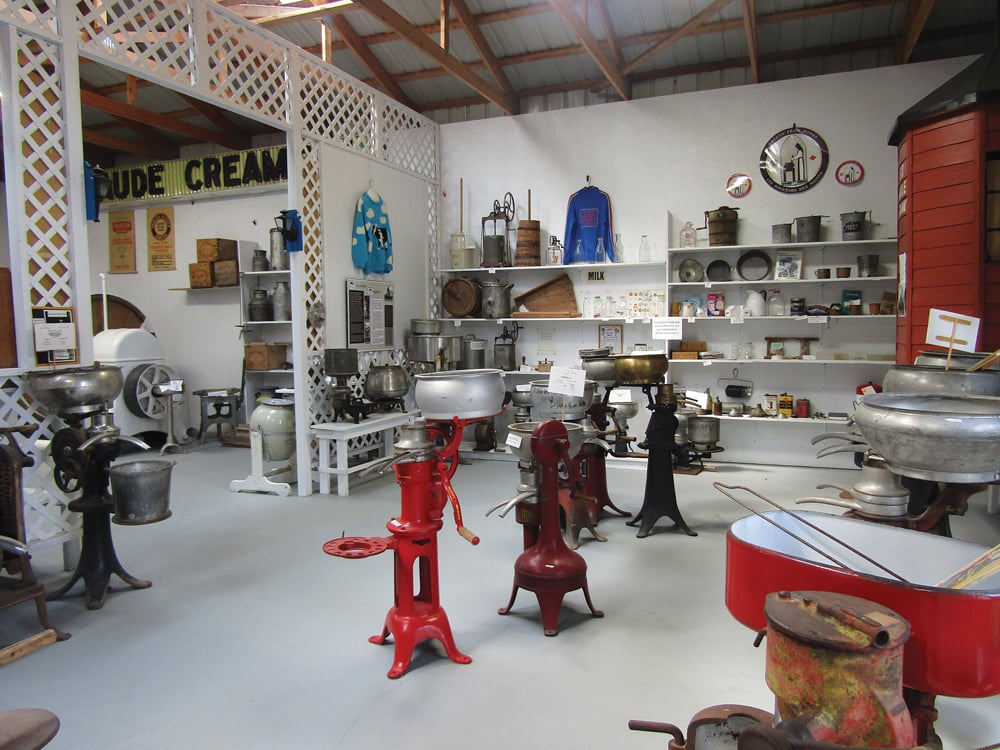Road trips may seem like a pricey proposition this summer due to high gas prices, but who says a road trip has to wrack up the odometer?
For a different option this summer, there’s the St. Claude area in southern Manitoba.
Small farming communities aren’t known for their tourist draw, but a jaunt off the province’s main thoroughfares may unearth options for a historically rich summer outing.
Read Also

Mandatory holiday joy a valid struggle
Christmas may not be that jolly for everyone. Farm family coach Kalynn Spain suggests those struggling with over-the-top joy during the holidays instead aim for “fulfilled” or “content.”
Rural residents might find interest in the history of Manitoba’s milk sector, with the Manitoba Dairy Museum located in the town proper on Third Street. The museum was founded in 2000 through the work of the St. Claude Historical Society, and in particular, the efforts of Raymond Philippot, a retired local dairy farmer and past president of the society.

The dairy industry is still very important in the region, and exhibits outline its story in Manitoba from early days to the present. Artifacts include cream cans, cream separators, butter churns, presses, milking machines and modern equipment. A display of different kinds of barbed wire caught my eye (72 different types dating back to the 1870s).
I also enjoyed the photo display showing the variety of dairy barns and sheds around Manitoba. If you live in rural Manitoba, the display allows you to look for a picture of a barn, past or present, from your area. Children might also be intrigued to see the two-headed calf and the pig with double hindquarters.
The nearby grounds hold non-dairy-related exhibits and buildings. These include a barn, the one-room Bell Country School (set up with desks, books and a ‘teacher’), a train station, a chapel with religious artifacts from two previous St. Claude churches, and a general store. The former CPR train station includes a railway office and living quarters for the stationmaster and his family. A plethora of heritage items are on display, including dishes, beds and clothing.
In 2022 the museum is open Monday to Saturday, 10 a.m. to 5 p.m., and on Sunday afternoons.
It’s not all the town has to offer. The Gaol Museum and Tourist Office is located on Provincial Trunk Highway (PTH) 240 in the centre of town.

A municipally designated historic site, the gaol is a surviving example of a small, stand-alone jail. It was built in 1912 and used as a lock-up until the 1930s. Later, it was enlarged for use as a fire hall from the 1940s until 1975.
Now returned to its original plan, it contains two cells, one with an unhappy ‘prisoner’ resting on a cot. Young visitors can be led to imagine spending time in these cramped quarters. Displays also provide stories of local incidents and of prisoners housed there over the years.
The smoking pipe on First Street, which runs along the north side of the railway tracks, may also be worth a visit. This pipe is reputed to be the largest in North America. It was built to recognize many of the early settlers who came to the St. Claude area in 1892 from the town’s namesake, the community of St. Claude in the Jura region of France, known for the manufacture of such pipes. The pipe is six metres long, a metre and a half high, and weighs 195 kilograms. It was constructed in 1984.

In the same area are the Saint Claude Gardens, running along the railway for about a kilometre through the middle of town. They contain flowerbeds and rose gardens, an arboretum and display with bird houses, a bird bath and a “little free library,” which invites visitors to take a literary offering or leave one of their own.
South of the railway, on Taché Street, are two other stops of interest. The cenotaph, as with most communities in rural Manitoba, commemorates local soldiers from the First World War and all wars since, while the grotto was formerly on the grounds of a local convent.
Farther down the main street is the Saint-Claude Church. It was built from 1964-65 and was designed by the Franco-Manitoban architect, Étienne Gaboury, the same designer behind the St. Boniface Cathedral in Winnipeg. On the grounds east of the church is the old church bell, formerly part of the town’s second church.
All said, if you plan to visit St. Claude, allow enough time to explore the list of attractions. Maybe stop for lunch and make it a day.
















